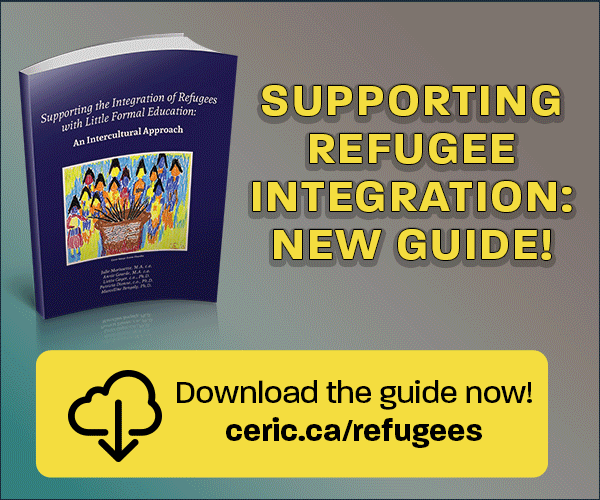An Examination of Rural Secondary Students' Post-Secondary Education Decisions
Keywords:
rural, youth, secondary students, post-secondary, education, decisionsAbstract
Canadian post-secondary education policies are increasingly oriented toward increasing the educational participation and attainment levels of under-represented groups such as rural populations. To better understand how rural students’ post-secondary education decisions are influenced, this study utilizes logistic regression analyses in an examination of survey data from 1,169 graduating rural students at 72 rural schools across the province of Newfoundland and Labrador. We observed that rural students’ decisions to continue education at the post-secondary level are strongly influenced by academic factors, and that first-generation students and students who do not consider student loans to be a funding option for them are at a particular disadvantage. The results also suggested that the choice between university and non-university studies is significantly impacted by academic factors, gender, and after school activities, but less dependent on rural students’ sources of financial support.
References
Alberta. (2006). A learning Alberta. Edmonton, AB: Alberta Advanced Education.
Anisef, P., Frempong, G., & Sweet, R. (2005). The effects of region and gender on educational planning and Canadian families. In R. Sweet & P. Anisef (Eds.), Preparing for postsecondary education: New roles for governments and families (pp. 201- 221). Montreal: McGill-Queen’s University Press.
Barr-Telford, L., Cartwright, F., Prasil, S., & Shimmons, K. (2003). Access, persistence and financing: First results from the Post-secondary Education Participation Survey (PEPS). Ottawa, ON: Statistics Canada.
Bajema, D. H., Miller, W. W., & Williams, D. L. (2002). Aspirations of rural youth. Journal of Agricultural Education, 43(3), 61-71
Bell, D., & Bezanson, L. (2006). Career-development services for Canadian youth: Access, adequacy and accountability. Ottawa, ON: Canadian Policy Research Networks.
Bell, S., & Anisef, P. (2005). Accessibility and student debt: The shift from public to private support in Canada. In R. Sweet & P. Anisef (Eds.), Preparing for post-secondary education: New roles for governments and families (pp. 55-86). Montreal:
McGill-Queen’s University Press. Bourdieu, P. (1977). Cultural reproduction and social reproduction. In J. Karabel and A. H. Hasley, Power and ideology in education. New York: Oxford University Press.
Bourdieu, P. (1984) Distinction: A social critique of the judgement of taste. London: Routledge.
Bourdieu, P. (1986). The forms of capital. In J. C. Richardson (Ed.), Handbook of theory and research for the sociology of education. New York: Greenwood Press.
Butlin, G. (1999). Determinants of postsecondary education. Education Quarterly Review, 5(3), 9-35.
Cabrera, A. F., & La Nasa, S. M. (2000). Understanding the college choice of disadvantaged students. New Directions for Institutional Research, 107, 5-22.
Cahill, M. (1992). A qualitative analysis of factors related to career development of rural women in Newfoundland and Labrador. In M. Van Norman (Ed.), National Consultation on Vocational Counselling Papers: 1992 (pp. 19-30). Toronto, ON: University of Toronto Press.
Canada. (2007). Looking ahead: A 10- year outlook for the Canadian labour market (2006-2015). Ottawa, ON: Human Resources and Social Development Canada.
Canadian Council on Learning. (2007). Post-secondary education in Canada: Strategies for success. Ottawa, ON: Author.
Choy, S. (1999). College access and affordability. Education Statistics Quarterly, 1(2), 74-90.
Choy, S. (2001). Students whose parents did not go to college: Post-secondary access, persistence, and attainment. Washington, DC: National Center for Education Statistics, U.S. Department of Education.
Christofides, L., Cirello, J., & Hoy, M. (2001) Family income and postsecondary education in Canada. Canadian Journal of Higher Education, 31(1), 177-208.
Coleman, J. (1988). Social capital in the creation of human capital. American Journal of Sociology, 94, 95-120.
Conrad, R. L. (1997). Career development of rural men and women: Different priorities. In H. Farmer (Ed.), Diversity and women’s career development: From adolescence to adulthood (pp. 212-225). Thousand Oaks, CA: Sage.
Corak, M., Lipps, G., & Zhao, J. (2003). Family income and participation in post-secondary education. Ottawa, ON: Statistics Canada.
Davies, S. (2005). A revolution of expectations? Three key trends in the SAEP Data. In R. Sweet & P. Anisef (Eds.), Preparing for postsecondary education: New roles for
governments and families (pp. 149- 165). Montreal: McGill-Queen’s University Press.
Deschenes, O. (2007). Estimating the effects of family background on the return to schooling. Journal of Business and Economic Statistics, 25(3), 265-277.
Drolet, M. (2005). Participation in postsecondary education in Canada: Has the role of parental income and education changed over the 1990s? Ottawa, ON: Statistics Canada.
Dupuy, R., Mayer, F., & Morissette, R. (2000). Rural youth: Stayers, leavers, and return migrants. Ottawa, ON: Statistics Canada.
Finnie, R. (2002). Student loans, student financial aid and post-secondary education in Canada. Journal of Higher Education Policy and Management, 24(2), 155-170.
Finnie, R., Lascelles, E., & Sweetman, A. (2005). Who goes? The direct and indirect effects of family background on access to post-secondary education. Ottawa, ON: Statistics Canada.
Frenette, M. (2004). Access to college and university: Does distance to school matter? Canadian Public Policy, 30(4), 427–443.
Frenette, M. (2006). Too far to go on? Distance to school and university participation. Education Economics, 14(1), 31–58.
Frenette, M. (2007a). Do universities benefit local youth? Evidence from university and college participation, and graduate earnings following the creation of a new university. Ottawa, ON: Statistics Canada.
Frenette, M. (2007b). Why are youth from lower-income families less likely to attend university? Evidence from academic abilities, parental influences and financial
constraints. Ottawa, ON: Statistics Canada.
Haller, E. J., & Virkler, S. J. (1993). Another look at rural-nonrural differences in students’ educational aspirations. Journal of Research in Rural Education, 9(3), 170-178.
Hango, D., & de Broucker, P. (2007). Education-to-labour market pathways of Canadian youth: Findings from the youth in transition survey. Ottawa, ON: Statistics Canada.
Hossler, D., Schmit, J., & Vesper, N. (1999). Going to college: How social, economic, and educational factors influence the decisions students make. Baltimore: Johns Hopkins Press.
Jeffery, G., Lehr, R., Hache, G., & Campbell, M. (1992). Empowering rural parents to support youth career development: An interim report. Canadian Journal of
Counselling, 26(4), 240-255.
Kirby, D. (2003). Paying the difference: Rural and urban students at Memorial University of Newfoundland. Unpublished doctoral dissertation, University of Toronto, Ontario, Canada.
Kirby, D., & Conlon, M. (2005). Comparing the economic experiences of rural and urban university students. Alberta Journal of Educational Research, 51(1), 4-17.
Lapan, R. T., Tucker, B., & Kim, S. K. (2003). Preparing rural adolescents for post-high school transitions. Journal of Counseling and Development, 81(3), 329-342.
Liu, W. M., Ali, S. R., Soleck, G., Hopps, J., Dunston, K., & Pickett, T. (2004). Using social class in counseling psychology research. Journal of Counseling Psychology,
(1), 3-18.
Looker, E. D. (1993). Interconnected transitions and their costs: Gender and urban-rural differences in the transitions to work. In P. Axelrod & P. Anisef (Eds.), The transitions from school to work (p. 43-64). Toronto: Thompson Educational Publishing.
Looker, E. D., & Dwyer, P. (1998). Education and negotiated reality: Complexities facing rural youth in the 1990’s. Journal of Youth Studies, 1(1), 5-22.
Looker, E. D., & Lowe, G. S. (2001). Post-secondary access and student financial aid in Canada: Current knowledge and research gaps. Ottawa, ON: Canadian Policy Research Networks.
Lowe, G. S., & Krahn, H. (2000). Work aspirations and attitudes in an era of labour market restructuring: A comparison of two Canadian youth cohorts. Work, Employment and Society, 14(1), 1-22.
Marshall, A. (2002). Life-career counselling issues for youth in coastal and rural communities. The impact of economic, social and environmental restructuring. International Journal for the Advancement of Counselling, 24(1), 69–87.
McDonough, P. M. (1997). Choosing colleges: How social class and schools structure opportunity. New York: SUNY Press.
McGrath, S.J. (1993). Post-secondary participation in Newfoundland. Unpublished doctoral thesis, University of Alberta, Edmonton.
McMahon, M, & Patton, W. (1997). Gender differences in children and adolescents’ perceptions of influences on their career development. School Counselor, 44(5), 368-377.
Newfoundland and Labrador. (2005). Foundation for success: White paper on public post-secondary education. St. John’s, NL: Department of Education.
Newfoundland and Labrador. (1998). Postsecondary indicators ‘98. St. John’s, NF: Department of Education.
Ontario. (2005). Ontario: A leader in learning. Toronto, ON: Ministry of Training, Colleges and Universities.
Pascarella, E. T., Pierson, C. T., Wolniak, G. C., & Terenzini, P. T. (2004). First-generation college students: Additional evidence on college experiences and outcomes.
Journal of Higher Education, 75(3), 249-284.
Sandefur, G. D., Meier, A. M., & Campbell, M. E. (2006). Family resources, social capital and college attendance. Social Science Research, 35(2), 525-553.
Saskatchewan. (2007). Post-secondary education accessibility and affordability: Final report. Regina, SK: Post-secondary Education Accessibility and Affordability Review.
Shaienks, D., & Gluszynski, T. (2007). Participation in post-secondary education: Graduates, continuers and drop outs, results from YITS Cycle 4. Ottawa, ON; Statistics Canada.
Sharpe, D. B., & Spain, W. H. (1991). Youth transition into the labour market: The class of ’89 initial survey of level III (grade 12) high school students. St. John’s: Centre
for Educational Research and Development, Memorial University of Newfoundland.
Sharpe, D. B., & White, G. (1993). Educational pathways and experiences of Newfoundland youth. St. John’s: Centre for Educational Research and Development, Memorial University of Newfoundland.
University of Alberta. (2001). Degrees of opportunity: Examining access to post-secondary education in Alberta. Final report of the Senate Task Force on Access to Post-Secondary Education. Edmonton: University Of Alberta Senate Task Force on Access to Post-Secondary Education.

Downloads
Published
How to Cite
Issue
Section
License

This work is licensed under a Creative Commons Attribution-NonCommercial-NoDerivatives 4.0 International License.
















